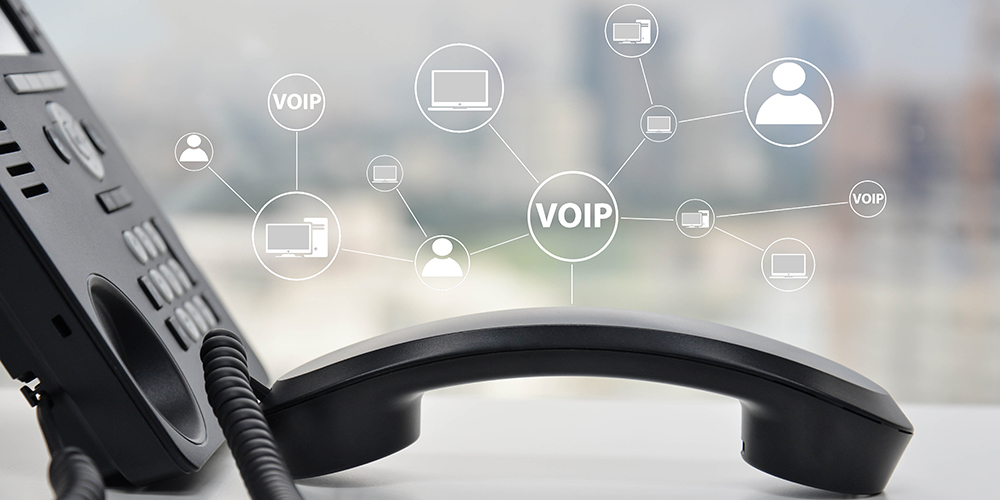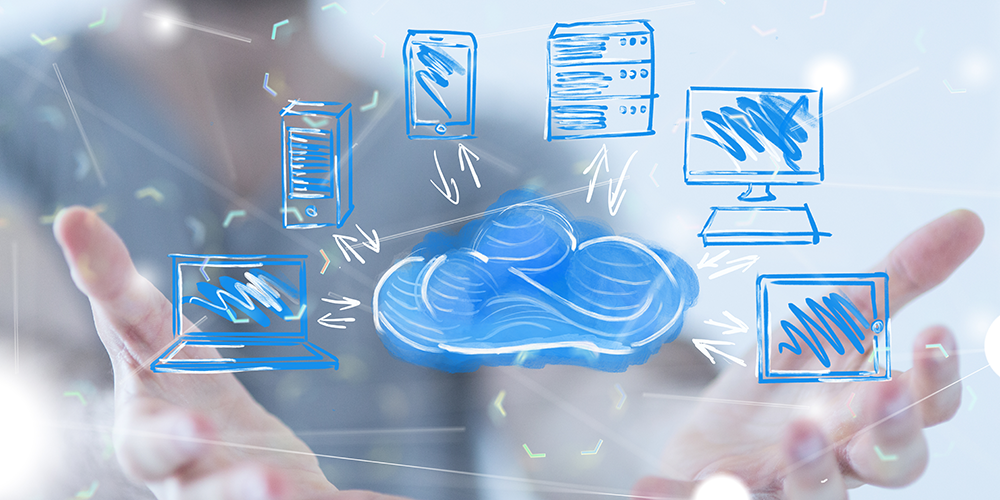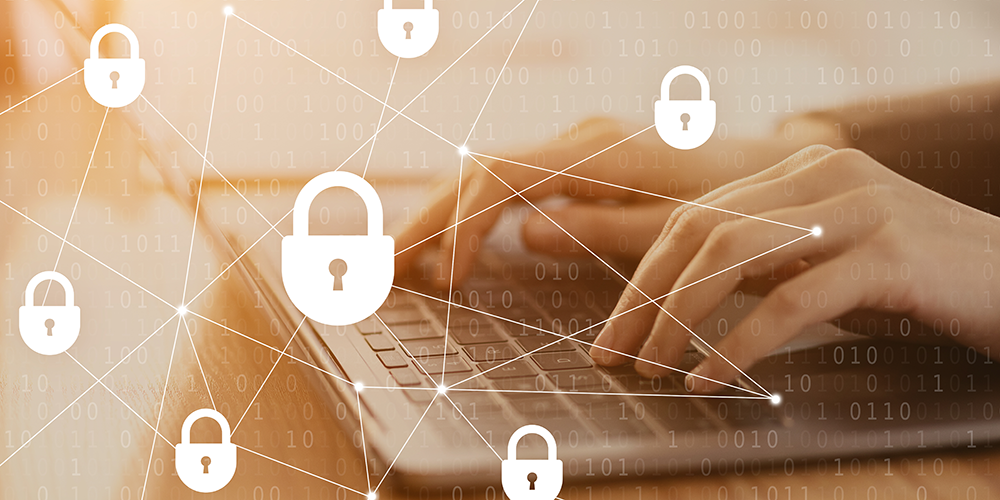
Feb 13, 2023 | SMB Technology, SMB Technology, SMB Technology, SMB Technology, Technology News
Business phone communication used to be based in the office. Now, with the technology of VoiceOver Internet Protocol (VoIP for short), you can communicate anywhere, anytime, on any device. Read on to learn more about this modern cloud communication option. Business Benefits of Internet Phone Service While different providers offer different features and options, what they have in common is using modern cloud phone communications. With traditional phone lines, a company is charged for not just each (additional) line, but for the time spent on calls. A “virtual” phone uses VoiceOver Internet Protocol (VoIP), converting voice to data and transmitting this over a broadband Internet connection. Internet phones use an Internet connection via a router, to which additional lines can be added. The VoIP technology brings all the benefits of cloud computing–the provider manages the infrastructure and backend operations. The expenses of on-premise infrastructure and overhead are reduced, and the service is payable on a subscription basis. Internet-based phone services are perfect for remote work, since workers can communicate using an Internet connection, working anytime and anywhere. Considerations for Using Virtual Phones With the business benefits of VoIP phones, your company will need to consider how the technology will help you realize business goals. If you want to hire remote workers, for instance, you will need to make sure their devices (mobile phones, laptops) are secure when connected to your network. Also, is your network strong enough to handle broadband traffic? When choosing a service provider, it’s best to think of how features they offer will mesh with your needs. Finally, the security of your...

Feb 2, 2023 | SMB Technology, SMB Technology, SMB Technology, SMB Technology, Technology News
With more people connected to company networks both inside and out of the office, a virtual desktop solution makes sense. What if your company can use such a solution, without having to maintain on-premise infrastructure and its costs? Read on to learn more about Desktop as a Service (DaaS), a cloud-based virtual desktop solution Business Benefits of Desktop as a Service (DaaS) Desktop as a Service, a cloud-based virtualization solution offers an Internet-based way to access cloud computing resources without having to maintain on-premise infrastructure and manage capital expense. With the cloud service provider handling the back-end infrastructure, your workers just need to access an Internet connection. Desktop as a Service uses a subscription-based billing model, charging just for what is used. Therefore, the capital expense of on-premise infrastructure is converted to a flexible operating expense. Speaking of flexibility, DaaS allows your organization to scale up and down in usage of computer resources – adding devices and users during busy seasons, and disconnecting as needed. With data at geographic data centers instead of on devices connected to the cloud, risk of data loss or compromise decreases. Finally, because of its ability to accommodate remote workers, DaaS is helpful to work anywhere, share applications and enable business continuity and disaster recovery efforts. Considerations in Adopting Desktop as a Service WIth all its benefits, certain questions remain to be answered. First, does your cloud service provider’s data centers strictly follow data handling regulations, including ones your company’s obliged to follow? Does the CSP take care of software needs, so that your workers don’t have to perform updates...

Jan 16, 2023 | SMB Technology, SMB Technology, SMB Technology, SMB Technology, Technology News
Attacks and threats producing attacks continue to occur. How can your company keep up, and protect itself from financial, legal and other consequences? Cyber resilience, the ability to recover from a cyber attack, involves people and processes even more than technological tools. Read on to learn more about helping your organization plan how to keep going in the face of an attack. Cyber Resilience Involves People and Processes Cyber resilience is more than just technological tools protecting your organization. Cybersecurity is part of it, but not all Cyber resilience has to do not just with preventing a cyber attack, but recovering from the damage and evaluating the response. This evaluation may include changes in policies and procedures. According to a CompTIA Community Blog post, people can be the most important asset in defending against – and in some cases recovering from – a cyber attack. What Causes Cyber Attack? According to statistics, more than 50% of cyber attacks and resulting data breaches stem from human error. Lack of training is a primary source of risk. Do employees know what to do if they get a phishing email? Do they know what one looks like? What are your workers’ skill sets, knowledge, levels of training? How well has your company defined processes for cyber security, disaster recovery, and monitoring? Though cyber resilience processes can be defined by executives, everyone plays a part in protecting your company. Performing a Cyber Resilience Assessment and Moving Forward While developing policies, processes and procedures can seem daunting, some resources can get you started. A good starting point is evaluating...

Jan 10, 2023 | SMB Technology, SMB Technology, SMB Technology, SMB Technology, Technology News
How do you know if your company’s cybersecurity efforts are working? Is the lack of a data breach enough to tell you that you’re doing well? Maybe, maybe not. Read on to learn about analyzing your risks and using that information to keep your systems and data safe, and your company doing business. Start with Analyzing Your Company’s Risks It used to be that companies just needed a firewall, some security patches and endpoint protection to protect digital assets. Nowadays, the secure perimeter is far outside company walls, with numerous endpoints connected to networks as employees work anywhere and everywhere. Events of the past few years have introduced new security challenges, including the uncertain security of network endpoints. More than tools, a comprehensive understanding of your firm’s risks and the consequences of these risks will help with security efforts. A good place to start is considering your company’s unique risk picture. What are your mission-critical data and applications, and what are the consequences of a data breach? Perhaps your business is subject to compliance regulations like HIPAA or PCI-DSS, or even GDPR. Financial and reputational consequences also exist, like the cost of downtime and clients’ trust in you to keep their data safe. Multiple Layers Increase Security A layered approach to security, more than any single technical tool, will help protect your company’s digital assets. Network monitoring is one such layer, showing both normal and suspicious activity. Multi-factor authentication protects your workers by keeping information out of the hands of attackers. Training your workers to spot phishing emails that can carry ransomware, and educating them...

Dec 8, 2022 | SMB Technology, SMB Technology, SMB Technology, SMB Technology, Technology News
When it comes to cybersecurity, tools and technology help. What can help even more is making cybersecurity a part of company culture, to the point of safety becoming second nature. Read on to learn more about establishing a culture of cybersecurity. The Vital Importance of Cybersecurity The attacks just keep coming. In recent years, SolarWinds and Colonial Pipeline are just a couple of well-known incidents. According to statistics, more than half of cyber attacks result from human error–weak or poorly managed passwords, susceptibility to phishing schemes, perhaps even ignorance of company policies and of best practices. The cost of attacks is supposed to continue increasing, to over $10 trillion by 2025. The Cybersecurity Conversation It’s never too late–or too soon–to openly discuss cybersecurity in your organization. Your executives, both in your IT department and outside of it, can set the tone for your company’s cybersecurity culture. For example, sharing learning from past experiences can show your workers that anyone can learn from mistakes. More than technology and tools, cybersecurity training needs to be an integral part of company culture–it saves costs, preserves your company’s reputation, and keeps your company in business. You can freely discuss cybersecurity in team meetings and everyday work conversations. Ideally, this will get workers of teams talking about ways to keep your company safe and may reach the individual level, encouraging them to evaluate their cybersecurity savvy and improve it. Regular training and retraining should also be part of the organization’s culture of cybersecurity. Staging mock “phishing” attacks to test workers’ knowledge and ability to act, will help to make training...

Dec 2, 2022 | SMB Technology, SMB Technology, SMB Technology, SMB Technology, Technology News
What if you could deduct technological expenses, reducing your taxes and availing your business of new technology? According to the IRS, you can deduct a portion of your tax expense for products (sometimes even services) if you deploy the tech in the current tax year. Read on to learn more about defraying expenses and even gaining a competitive advantage, too. Tax Deductions for Technology Purchases Your company may be considering what technological purchases to make in the near future. What if you could get the technology assets you need, while lightening your tax bill? According to the IRS tax code, Section 179, small to medium-sized businesses can deduct the entire purchase price of both new and used equipment from what they pay in taxes. To be eligible, the business must meet any one of three requirements. The business must be in operation, or set to start operating, and have purchased IT assets throughout the year. Types of purchases to which the deduction applies are on-premise improvements like security systems and security systems; devices like computers and laptops, tablets and phones; and software, servers and networking equipment. A business must earn no more than $2.5 million annually, as well as deploy the technology within the same tax year as purchased. Equipment purchases arising from an IT services contract can be deducted, but not the service itself. Business Benefits and Considerations Who doesn’t want to pay less in taxes? Aside from this obvious benefit, the budgetary burden for purchasing even new equipment is lightened. Your company can perhaps even launch a new initiative like unified communications (allowing...







